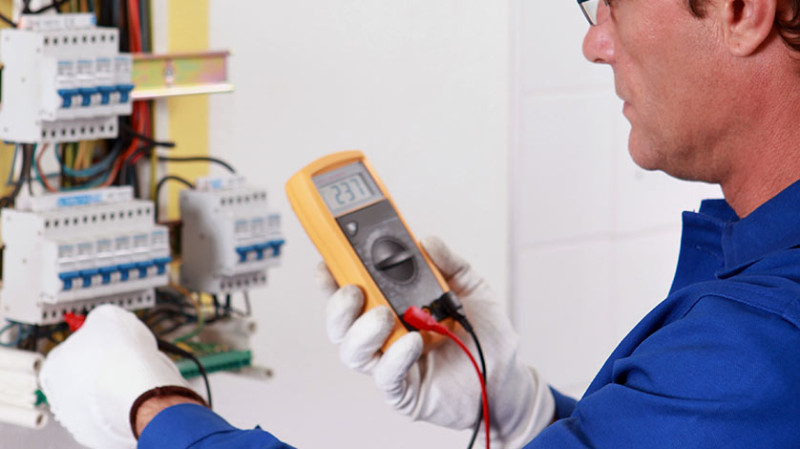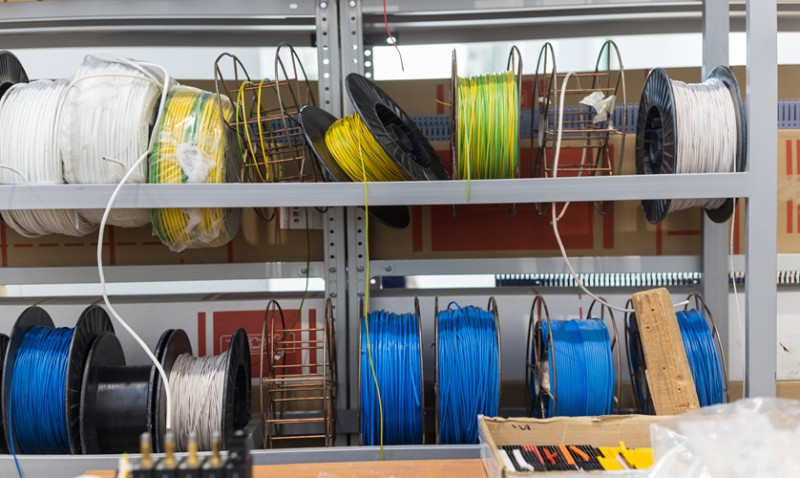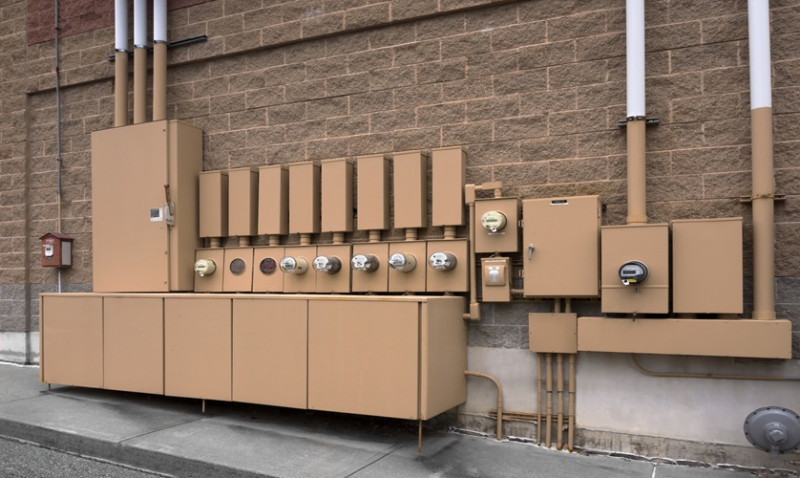
Ever wondered what it’s like to be an electrician in the UK? Whether you're a DIY enthusiast looking to understand more about the trade, a young professional planning a home improvement project, an architect specifying renovation details, or a designer planning lighting and electrics, this behind-the-scenes look into the daily routine of an electrician will help you see just how vital this skilled profession is.
From planning and safety checks to installations and emergency callouts, the modern UK electrician does far more than just ‘fixing lights’. Let’s plug into their world.
Early Morning Kick-off: Tools, Jobs & Planning
The day usually starts around 7:00 AM. Before heading out, most electricians spend about 30 minutes reviewing their schedule for the day, checking materials, and ensuring they have the necessary tools packed into their van. Organisation is everything — a forgotten component can delay an entire job, especially in rural areas or if the supplier isn’t nearby.
They make sure PPE (Personal Protective Equipment) like gloves, safety boots, eye protection and insulated tools are in check. Safety doesn’t start at the job site — it starts at home or the depot.
A quick coffee, sometimes while checking electrical drawings sent by a contractor or homeowner, and they’re off. In many cases, electricians also liaise with builders or designers early in the day to coordinate progress, particularly for site-based work such as new builds or kitchen rewires.
For self-employed electricians, the early hours might also include admin work — responding to client queries, quoting on jobs, or ordering materials for upcoming tasks. Good time management and self-discipline are essential to stay on top of the workload.
Morning Jobs: From Sockets to Smart Homes
Most installations and repair work begin in the morning. A typical job might involve rewiring a living room, installing a new consumer unit, fitting downlights, or troubleshooting faulty sockets in a kitchen renovation.
Electricians have to work to BS 7671: Requirements for Electrical Installations — commonly known as the Wiring Regulations — and stay updated with the latest amendments. This ensures safety and compliance with UK Building Regulations, particularly Parts P and L, which govern electrical work in dwellings and energy efficiency.
As smart technologies become standard, electricians now regularly install smart heating thermostats, Wi-Fi-enabled lighting systems, EV chargers, and energy monitoring devices. Working closely with designers and homeowners, they help bring complex visions to life, turning technical dreams into practical functionality.
Communication is key here. Clients often don’t understand the specifics of load balancing or ring circuits, so it's up to the electrician to translate geek-speak into clear language and ensure the client's needs are met safely and efficiently.
Lunchtime Logistics & On-the-Go Quotes
Lunchtime is rarely sacred — it might mean a sandwich on the go or a quick sit-down in the van. It's also when many electricians call suppliers, chase deliveries, or follow up with customers who need quotes or updates on availability.
Many self-employed electricians use job management apps like Tradify or Fergus to track progress, schedule new appointments, and send invoices. Technology has massively improved business operations in the trades.
This midday pause is also a good time for electricians to update safety documentation. Whether they’re part of NICEIC, NAPIT or another certification body, all work must be documented accurately, especially when issuing electrical installation condition reports (EICRs) or minor works certificates.
Afternoon Appointments & Larger Installations
The second half of the day often deals with ongoing or more complex tasks. This might include routing cabling through loft spaces or walls, installing or replacing consumer units (fuse boards), connecting additional sockets and lighting circuits, or finishing the first fix wiring on a large new build or renovation project.
For planned works, electricians coordinate with plasterers, plumbers, and joiners to make sure electrical components are sited correctly and kept accessible for final fix stages. Timing is critical — being delayed by one trade can limit what the electrician can complete.
Afternoon jobs may also include PAT testing for landlords, fitting smoke alarms in rental properties to meet legal compliance, or upgrading consumer units equipped with RCBOs for better circuit discrimination and fault detection.
With the rise in electric vehicles across the UK, more electricians are now trained and registered as EV charger installers (OZEV-approved). Fitting a wallbox charger at a domestic property can take the best part of an afternoon, depending on cable routing and the state of the existing installation.
Evening Wrap-Up & Emergency Work
By 4:00 or 5:00 PM, many electricians return home or head to the last job — often something short like replacing a faulty light switch or completing a final fix. Once back, it's time for cleanup, tool checks, restocking the van, and finishing paperwork.
However, emergency calls don’t follow a 9 to 5 schedule. A short circuit, loss of power, or RCD fault can leave homeowners stranded. Electricians offering 24/7 callouts often get evening or night work, especially during winter when heating and lighting are essential.
Electricians must diagnose faults quickly and safely under pressure, sometimes working in less-than-ideal conditions — think flooded basements or dark lofts at 8 PM.
Though exhausting, providing emergency services is also rewarding. Helping vulnerable clients, families with children, or small businesses stay powered up makes a tangible difference.
The Toolbox of Skills: Technical and Beyond
Of course, the physical tools — drills, testers, wire strippers, metres — play a critical role. But soft skills are equally important. Electricians are often in people’s homes or collaborating on-site. Respect, clear communication, and reliability are essential traits for building trust and long-term success.
They must stay current with electrical regulations, understand evolving technologies, and continually invest in their own training and safety qualifications.
Here’s a quick look at the typical daily toolkit for a UK domestic electrician:
| Essential Tool | Purpose |
|---|---|
| Voltage Tester | Ensure circuits are safely isolated before work begins |
| Multimeter | Test voltage, current, and resistance to diagnose faults |
| Cable Cutters | Cleanly cut cables without nicking conductive wires |
| Screwdrivers (Insulated) | Tighten or remove terminals securely and safely |
| Fish Tape / Rods | Pull wire through conduits or wall cavities |
| Circuit Breaker Finder | Identify which breaker controls a given socket/outlet |
| PPE Kit | Essential for site safety and protecting against shocks |
Is This the Right Path for You?
If you’re a DIYer looking to understand how the professionals work — or even thinking of retraining for hands-on work after a desk-based career — becoming an electrician offers solid earning potential and varied, technically rewarding work.
Sound interesting? Visit the NICEIC or City & Guilds websites to learn about courses and certifications. There is strong demand for skilled electricians across the UK, and with sustainable home energy solutions on the rise, the opportunities for growth have never been brighter.
Final Thoughts
The life of an electrician is far more than just “fixing wires.” It’s about precision, safety, and delivering energy solutions that power homes, businesses, and lifestyles. Whether you’re planning a project or just curious about the trade, understanding a day in the life of an electrician can help you plan better, build smarter, and appreciate the professionalism behind every switch and socket.
So next time the lights come on perfectly, thank your spark. Their work powers your world — safely and efficiently.







